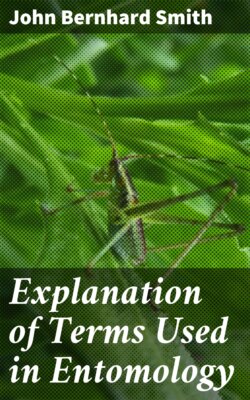Читать книгу Explanation of Terms Used in Entomology - John Bernhard Smith - Страница 5
На сайте Литреса книга снята с продажи.
EXPLANATORY.
ОглавлениеTable of Contents
Definitions of general application are as a rule given first, where more than one is necessary ; next those of limited use, and finally the specific meaning in each order in which there is any notable difference.
Where a word has more than one ending, the difference is given after a hyphen which represents the stem word: e.g., ametabola -ous; the latter in place of ametabolous, which indicates the possession of the characters peculiar to the ametabola. Where there is an English and a Latin ending, the former is usually given with the word and the other is added: e.g., aequilate -us, instead of aequilatus, there being no difference in the application. Usually the singular form of the word is first given, and the plural ending is added ; e.g.,
antenna -ae,
cenchrus -ri,
desideratum -ata ;
but occasionally, when the plural is more commonly used, e.g., epimera -eron, this is reversed and the singular ending is added: when the two are different in form, e.g., foot and feet, the words are given separately, and so when there is a difference in the application, as in
uncus and unci.
In the definition of color terms the words in brackets [ ] refer to the equivalent color as named on the plate, or the combination needed to produce it.
The names in parentheses ( ) are those of the writers whose definitions are used, or who have used the term in the sense defined. In the terms of venation, these parentheses occur most frequently.
Most of the signs and abbreviations are those in common use
:= equal to, or the same as ;
q. v., which see ;
pl., plural ; abb., abbreviated.
The abbreviated names are:
Comst., for Comstock ; Coq., for Coquillett;
Meig., for Meigen ; Nort., for Norton:
O. S., for Osten-Sacken: and Will. for Williston.
